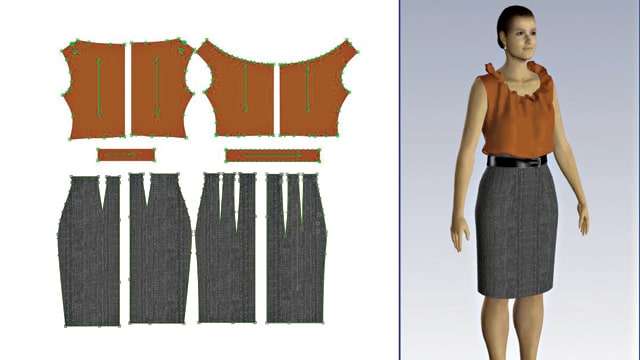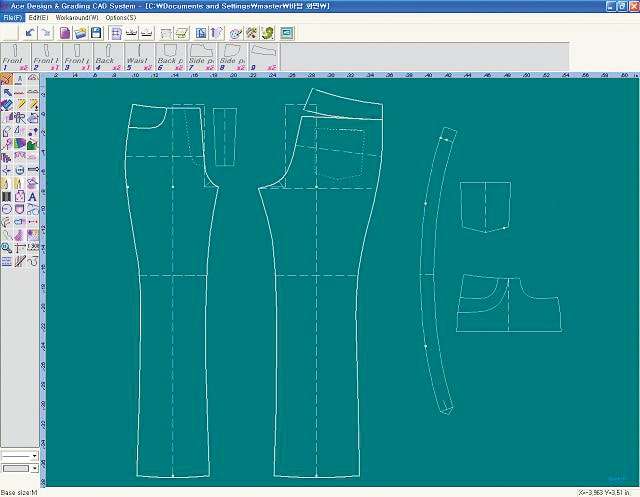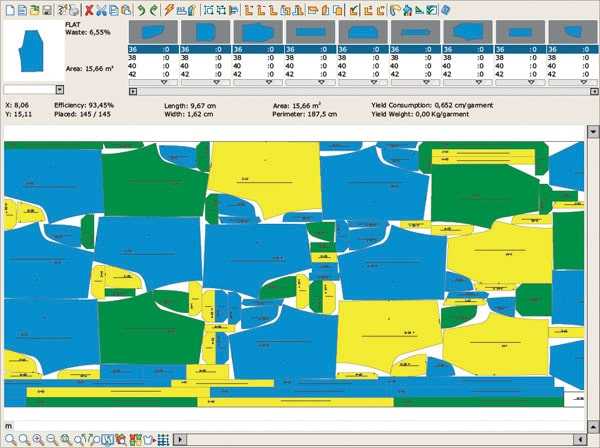
It is almost two decades since the first apparel CAD came to India in 1991. From being state-of-art luxury solutions, it has become a basic necessity for any large or small-to-medium apparel manufacturers. There are several myths about potential benefits of apparel CAD that lead to over-expectations which require clarifications.
Installing CAD means getting rid of your pattern master Wrong
You do require a pattern maker to operate CAD. Imagine you are asked to draw a straight line without using ruler; if you compare drawing a straight line with pattern drafting and ruler with CAD, then CAD is just like a tool for pattern making. Similar to a mechanical drafting tool, CAD is an electronic drafting tool to help drafting pattern accurately, quickly and with consistent quality.

Installing CAD will always result in enormous fabric savings Wrong
CAD has a module called marker making. Patterns are being laid in a given width of fabric, either manually or automatically, to calculate length of fabric required. Arrangement of patterns or nesting (as it is scientifically called) is subject to numerous permutations and combinations. While making marker manually, all possible permutations and combinations are not possible to try due to time constraint, resulting in possibilities of finding ‘still better combinations’. While using automatic mode of marker making, all possibilities can be tried and thus arriving at the best possible combinations rationally.
In reality maximum CAD users use manual options of marker making, i.e. using human intuitions/gut feel to find the best combinations and using CAD only as a tool. Marker making efficiency actually improves with experience over the years, if you are using same or similar product types. Due to shear experience the marker making operator will know the best combination while a new operator, even though using CAD as a tool, will not be able to match same efficiency; this flusters many organizations after acquiring CAD. This is more prominent in domestic market as the product variety and probability of improving marker efficiency is less. It is unwise to imagine that any CAD operator will beat your experienced marker maker. CAD as a tool do help in making marker like you have full 2-metre view of fabric length in front of your screen (to see where gap exists and where blocking could be possible), which otherwise is not possible.
Better marker efficiency always means better utilization of fabric Wrong
While marker efficiency is important, marker length is equally important. Imagine you are a buying organization and in the same style, for an S-M-L marker, one manufacturer clocked 80% efficiency while another manufacturer reported 78% efficiency, though marker length is same. In such cases or reverse cases (where marker efficiency is same but marker length differs), someone should investigate further whether fabric width in both cases are same? Whether number of pieces (pattern components) placed in both cases are same? Whether similar grain line rule is being followed in both cases? In many cases it was found that extra ‘unusable’ pieces are often added to clock higher efficiency and impress management. It is mathematically impossible to have difference in length with similar efficiencies (or vice-versa) with all parameters remaining same.

Fabric saving is the single most important benefit of CAD Wrong
Fabric saving is one of the many benefits, depending on anyone’s business type and product ranges that can reap benefit in different areas. It is incorrect to base your return on investment calculation based on fabric savings only. Some of the lesser known but realistic and mandatory benefits are working with blocks, faster marker making, accurate grading, easy calling of older styles, pattern manipulation to generate new styles from old pattern, checking of fits, etc.
It is essential to buy digitiser and plotter with CAD Wrong
Rather you should never buy digitiser with CAD. Every CAD has ‘pattern design module, where you create any pattern directly on screen. Old habits never die. Digitiser promotes old practices to continue, i.e. making pattern on paper and then inputting the pattern to computer by digitising it. This is not only a waste of time but also compromises on the in-uilt accuracy. In the absence of digitiser, existing pattern maker also learns to operate CAD to make pattern directly on computer. An input device (digitizer of scanner) is still required by organizations to probably input the old paper patterns to CAD.
Smoothing of curves is not possible in CAD as it is in manual method Wrong
CAD rather offers different variations of smoothing techniques. Actually there are different smoothing techniques available with different brands of CAD. Probably this is one important feature which the operator must check with their pattern master. B-spline is one of the tested and commonly used techniques.
Draping technique of pattern making is not possible in CAD Wrong
Though drafting is a commonly used module in CAD, draping module is also available with several brands, commonly called as 3D to 2D flattening.
CAD is not for me as my master loves to draft real size pattern Wrong
Celebrated pattern makers across the world resisted use of CAD citing several lacunas. Miniature size drafting using mouse and keyboard (rather pencil and hip curve) was a bone of contention for lack of realistic feeling. Actually to woo pattern makers, CAD manufacturers have gone all the way to make real size electronic drafting board and real size L-curve and French curve, etc. To draw real size pattern, which automatically input to the computer, technology is available but it is expensive. You can have manual drafting experience as well as CAD benefits simultaneously.

Post a Comment